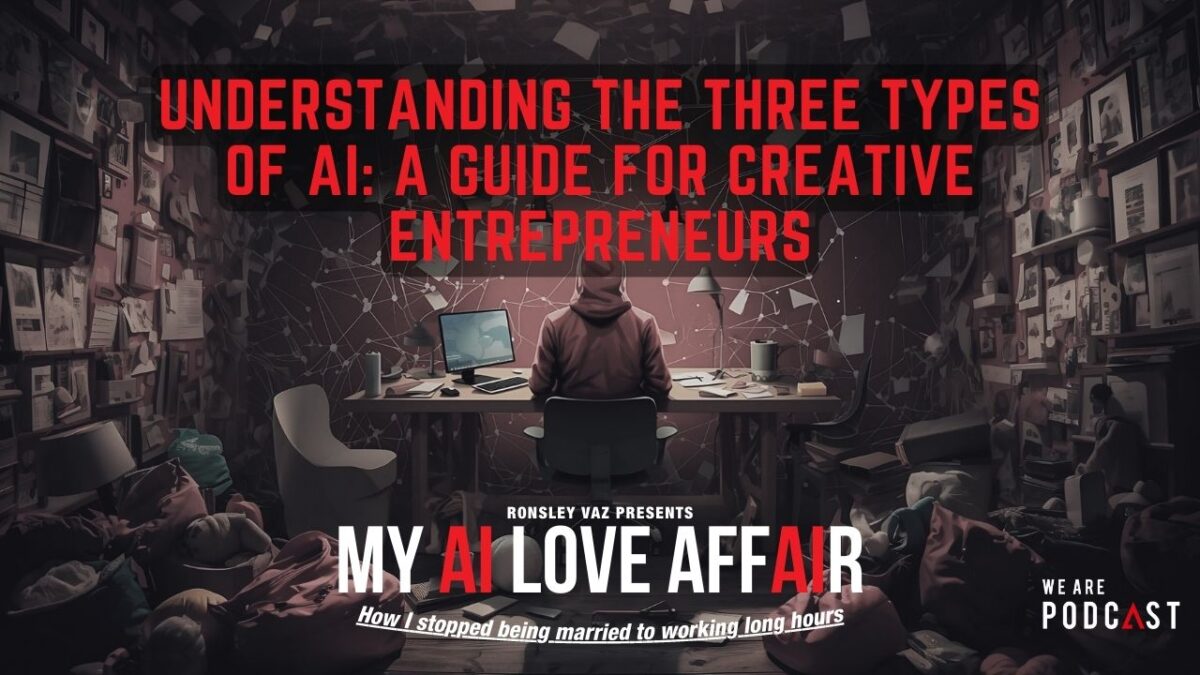Artificial Intelligence (AI) has become an integral part of our lives, permeating every sphere of work and leisure. As a creative entrepreneur or business owner, understanding the different types of AI is crucial to stay ahead in today’s fast-paced world. Creative entrepreneurs, in particular, stand to benefit from knowing about AI, as it can help them solve problems, make their work more efficient, and even create new products or services.
In this guide, we’ll explore the three types of AI: Narrow AI, General AI, and Superintelligent AI.
Concept of AI
Understanding the basics of AI is crucial to understanding the different types of AI because it provides a foundation for grasping how AI works and what it is capable of. AI is a broad field of study that encompasses many different types and applications, from narrow AI to superintelligent AI. By understanding the basics of AI, individuals can better understand the potential and limitations of each type and make informed decisions about how to utilize AI in their work or personal lives.
Three Types of AI: Narrow AI, General AI, and Superintelligent AI
- Narrow AI is specialized in performing one specific task, like recognizing faces or recommending songs. Examples of narrow AI include virtual assistants like Siri and Alexa, language translators, and spam filters. Narrow AI is good at doing one thing exceptionally well but has limited capabilities beyond that.
- General AI can learn and apply knowledge across a wide range of tasks. It can learn and understand new information, apply knowledge to new situations, and solve problems across various domains. Examples of general AI include self-driving cars, virtual assistants that can handle multiple tasks, and robots that can perform different functions.
- Superintelligent AI is much brighter than the best human brains in every field. It can learn without human guidance, solve complex problems on its own, and make decisions that have life-altering consequences. Superintelligent AI could be used to solve global issues like climate change, poverty, and hunger.
Autonomy in AI
Autonomy in AI refers to how independently an AI system can operate. A narrow AI system has very little autonomy, while a superintelligent AI system has the highest level of autonomy. An example of a narrow AI system with low autonomy is a vacuum cleaner that can only clean your house. On the other hand, a superintelligent AI system with high autonomy could be a scientist trying to solve complex problems.
For example, a vacuum cleaner that can only clean your house is a narrow AI system with low autonomy. On the other hand, a superintelligent AI system with high autonomy could be a scientist trying to solve complex problems. Understanding an AI system’s autonomy level is crucial to understanding its capabilities and potential applications. It’s fascinating to see how AI is getting closer to how humans think and problem-solve.
Learning Ability in AI
Learning ability is a key component in distinguishing different types of AI. It refers to an AI system’s ability to learn from data and improve its performance over time. Think of it like a student studying hard and improving their grades. By improving their learning ability, AI systems can become more autonomous and better able to operate independently.
This ability is critical in allowing AI to adapt and become more effective in various tasks, from playing games to analyzing complex data. It’s what makes AI so powerful and promising for creative entrepreneurs. AI can help us find new ways to solve problems, make our work more efficient, and even create new products or services.
Problem-solving in AI
One of the most important applications of AI is problem-solving. AI can solve complex problems that would be difficult or impossible for humans to tackle. With superintelligent AI, we could potentially solve global problems like climate change, poverty, and hunger. Even narrow AI and general AI can be used to solve specific business problems, like improving customer service or streamlining operations. AI’s possibilities for problem-solving are endless, and I can’t wait to see how this technology continues to transform the world around us.
It’s like we’ve been given a treasure map to find solutions to the most complex problems. With AI as our tool, we can make our lives easier and more efficient. It’s like having a superhero that can save the world or a specialized tool that can make our lives easier.
In conclusion, understanding the different types of AI and their capabilities is essential for creative entrepreneurs. By exploring the possibilities of AI and using it as a tool, entrepreneurs can create amazing products and services for their customers and tackle any challenge to achieve their goals faster than ever before.
—–
Check out my podcast on myailoveaffair.com, subscribe to the show, and give me a review and rating; it helps us unite the AIGeeks like you.
If you are a business owner that wants to use AI to make business easy and wants to find others just like you in a group where we share tactics & ideas on what’s working (or not) for us when it comes to using AI in the best possible way… go to geeks.co/discord … it is free.

